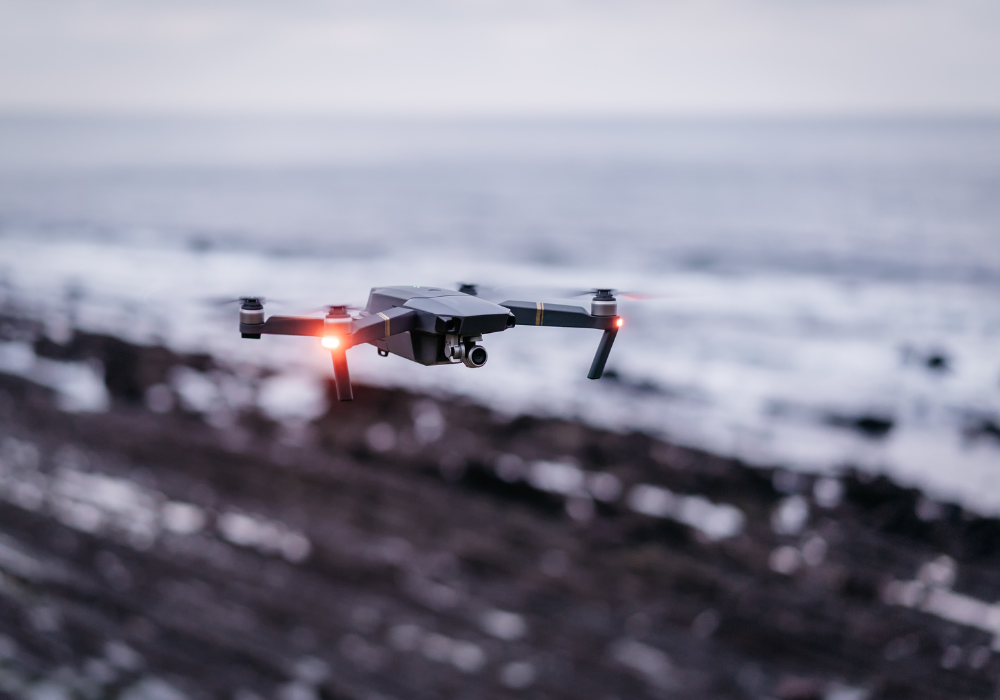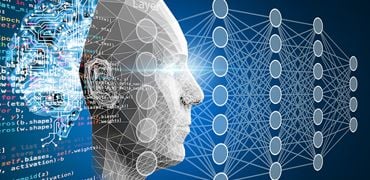Drone Language: What is It, How it Works, & Top 5 Benefits

Within the ever-evolving realm of AI and robotics, drone language is swiftly surfacing as a pivotal innovation, a tool that is indispensable in facilitating seamless communication among AI drones. Droidish, the specific language under scrutiny, isn’t merely enhancing drone interaction. Instead, it is meticulously paving the way for advanced autonomous operations. Consequently, it garners the undivided attention of technology enthusiasts, dedicated AI drone developers, and inquisitive researchers. For a deeper understanding and insight into this groundbreaking technology, we explore the nuances of this technology.
In this blog, you will learn:
- What is Drone Language, and How Does It Facilitate Communication Between AI Drones?
- How is Droidish Different From Other Programming Languages Used in AI Drones?
- What are the Potential Benefits of Using Drone Language for AI Drone Communication?
- Are There Any Limitations or Challenges Associated With Implementing Droidish?
- Can All AI Drone Manufacturers Adopt Droidish, or is It Specific to Certain Brands?
 What is Drone Language, and How Does It Facilitate Communication Between AI Drones?
What is Drone Language, and How Does It Facilitate Communication Between AI Drones?
Drone language, with a particular focus on Droidish, is a unique communication protocol. This protocol’s meticulous design enables AI drones to interact effectively with each other. Moreover, with the backing of over $7 million in Air Force contracts, Droidish isn’t just a simple set of codes. It allows for sophisticated machine-to-machine discussions, essential for executing coordinated maneuvers without human intervention. Moreover, the language is continuously evolving, with new “words” being ingeniously added to its vocabulary to handle different situations, thereby allowing drones to collaborate efficiently in various scenarios.
How is Droidish Different From Other Programming Languages Used in AI Drones?
Distinctively crafted, Droidish is designed solely for facilitating communication between drones. In contrast, other programming languages used in AI drones serve multiple purposes, such as data processing, payload management, obstacle avoidance, etc. Further, the development of Droidish primarily focuses on creating a common language that allows drones from different manufacturers to communicate. Consequently, this fosters interoperability and coordination during operations. Furthermore, its ingenious design allows for vocabulary expansion as tasks become more sophisticated, ensuring it remains relevant and effective in various applications and scenarios.
ALSO READ: Role of Artificial Intelligence and Machine Learning in Robotics
What are the Potential Benefits of Using Drone Language for AI Drone Communication?
1. Enhanced Coordination
By utilizing drone language, AI drones not only achieve enhanced coordination but also excel in executing complex tasks and maneuvers seamlessly. Thus, this seamless execution is indispensable for operations that demand efficiency and precision without human intervention.
2. Improved Interoperability
Significantly, the introduction of drone language plays a pivotal role in fostering interoperability among drones from various manufacturers. Interestingly, this interoperability isn’t a trivial feature; instead, it is a vital characteristic crucial for enabling drones to collaborate harmoniously during operations, particularly in high-stakes scenarios like warfare where diverse drone models are deployed.
3. Facilitated Autonomous Operations
With the strategic use of drone language, drones transform from mere machines to intelligent entities. These entities are not only capable of making decisions autonomously but also navigating through various situations independently, thereby markedly reducing the need for human input and intervention.
4. Efficient Task Execution
Upon incorporating drone language, AI drones experience a significant boost in their task execution efficiency. Notably, this efficiency is a substantial improvement that empowers drones to perform duties with unmatched speed, accuracy, and precision, making them invaluable assets across various fields and applications.
5. Enhanced Communication Capabilities
Drone language significantly amplifies the communication capabilities of AI drones. This enhancement goes beyond just facilitating information exchange; it also ensures that communication occurs clearly, precisely, and without ambiguities, which is imperative for successfully completing collaborative tasks and missions.
ALSO READ: How to Become a Robotics Engineer: Follow These Easy Steps
Are There Any Limitations or Challenges Associated With Implementing Droidish?
1. Ethical Concerns
The inevitable transition toward fully autonomous drones utilizing drone language brings forth deep-seated ethical concerns. These concerns aren’t baseless; they center on accountability issues and the potential for machines to make decisions that might inadvertently harm civilians, thereby raising serious moral and ethical questions.
2. Technological Hurdles
Implementing Droidish presents a set of technological challenges. These challenges demand sophisticated coding and continuous development to ensure Droidish facilitates effective communication in diverse situations and scenarios.
3. Dependence on Human Input
Despite its prominent focus on autonomy, it’s important to note that Droidish still requires human input. While this doesn’t signify a weakness in the system, it is a crucial component for expanding its vocabulary and addressing unprogrammed scenarios. However, this reliance on human input does have a notable impact on its level of independence, a feature it boasts of.
4. Financial Investment
Implementing Droidish necessitates a substantial financial investment. Beyond the initial setup costs, this also extends to ongoing expenses related to maintaining, updating, and refining the system to guarantee its effectiveness and relevance in the rapidly evolving domains of AI and drone technology.
5. Learning Curve
The adoption of Droidish introduces a learning curve for both developers and end users. Learning this drone language thus demands time, effort, and commitment to effectively understand and utilize the language, posing a challenge for those new to this innovative technology.
ALSO READ: Make Way for AI: Top 10 Applications That are Reshaping Industries
 Can All AI Drone Manufacturers Adopt Droidish, or is It Specific to Certain Brands?
Can All AI Drone Manufacturers Adopt Droidish, or is It Specific to Certain Brands?
Droidish, a versatile drone language, is adoptable by various AI drone manufacturers. Moreover, its development, meticulously aimed at fostering interoperability among diverse drone brands, ensures it is an inclusive and universal language for AI drones, enhancing communication and coordination across various applications and scenarios.
As it undergoes continuous development, Droidish i’s on track to becoming a universal language for AI drones, facilitating effective communication regardless of brand association. Thus, this inclusivity makes it invaluable for all AI drone manufacturers.
For those eager to delve deeper into AI and machine learning, enrolling in Emeritus’ artificial intelligence courses and machine learning courses is a wise step. These courses offer a deep understanding of the latest technologies and trends in the AI and machine learning domain. Various AI drone manufacturers can adopt Droidish, as it is not confined to certain brands, making it a viable option. Further, to fully grasp the intricacies of AI and drone languages, consider engaging with artificial intelligence courses, providing a solid foundation and practical insights into these revolutionary technologies.
Write to us at content@emeritus.org











